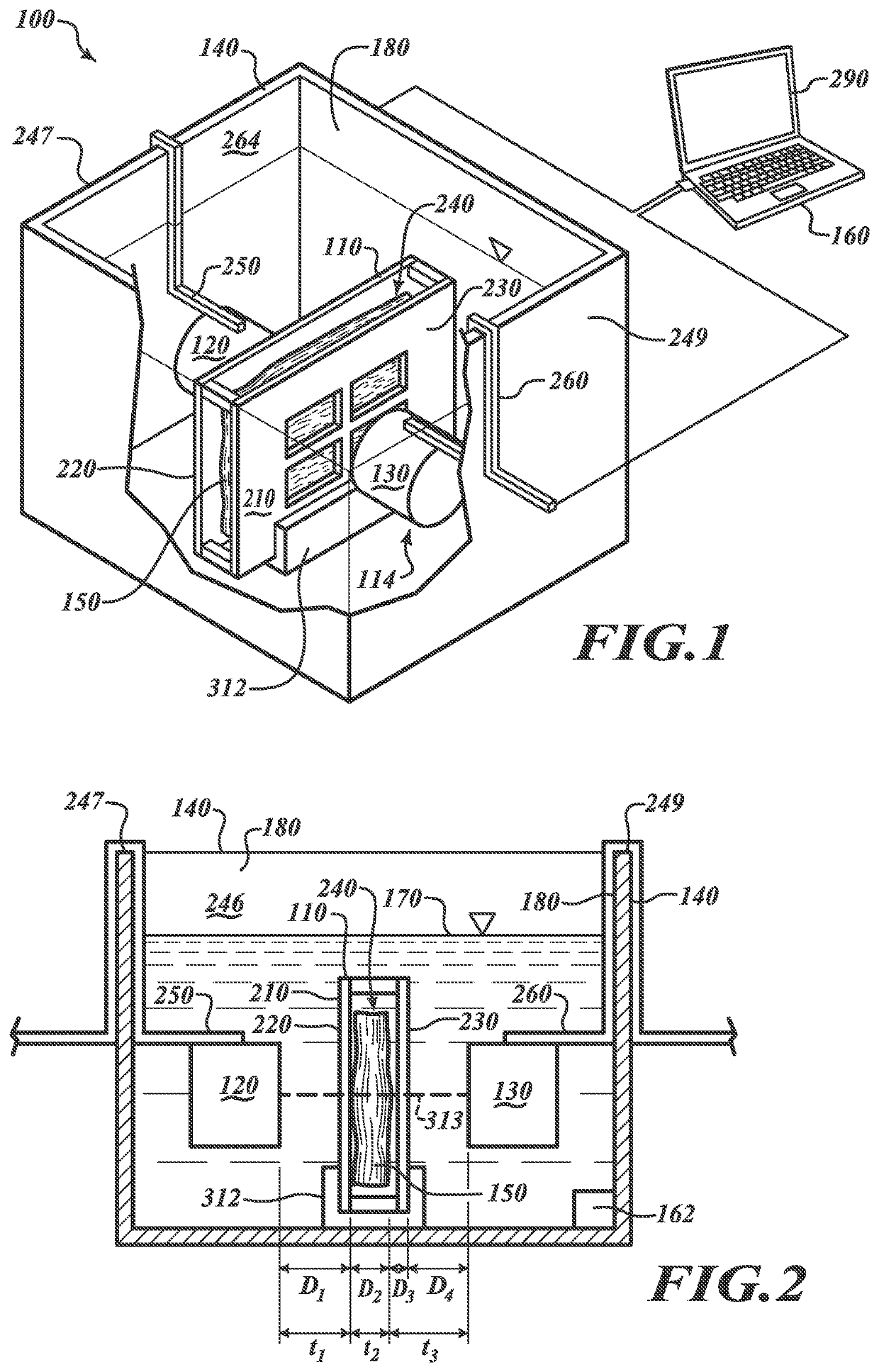Systems and methods for monitoring tissue sample processing
a tissue sample and monitoring system technology, applied in the field of systems and methods for monitoring tissue sample processing, can solve the problems of poor tissue morphology, no standard procedures, staining issues, etc., and achieve the effects of enhancing the quality of tissue preservation, protein structure, and minimizing or limiting underfixation
- Summary
- Abstract
- Description
- Claims
- Application Information
AI Technical Summary
Benefits of technology
Problems solved by technology
Method used
Image
Examples
Embodiment Construction
[0066]At least some embodiments of the present disclosure are directed to monitoring a multi-step tissue preparation process that includes, without limitation, a fixative delivery process (“delivery process”) and a fixation / cross-linking process (“fixation process”). The delivery process can include contacting the tissue sample with a liquid fixative at a first temperature for a first period of time. Movement of the fixative can be monitored to evaluate whether the fixative has adequately infused the sample. After desired diffusion is achieved, the tissue sample can be heated to a second temperature higher than the first temperature to start or promote cross-linking. If the fixative is formaldehyde, cross-linking can occur between formaldehyde molecules and amine containing cellular molecules without significantly compromising the tissue characteristics (e.g., antigenicity and / or morphology).
[0067]The delivery process can involve diffusion of cold fixative throughout substantially t...
PUM
| Property | Measurement | Unit |
|---|---|---|
| fixation time | aaaaa | aaaaa |
| temperatures | aaaaa | aaaaa |
| temperatures | aaaaa | aaaaa |
Abstract
Description
Claims
Application Information
 Login to View More
Login to View More - R&D
- Intellectual Property
- Life Sciences
- Materials
- Tech Scout
- Unparalleled Data Quality
- Higher Quality Content
- 60% Fewer Hallucinations
Browse by: Latest US Patents, China's latest patents, Technical Efficacy Thesaurus, Application Domain, Technology Topic, Popular Technical Reports.
© 2025 PatSnap. All rights reserved.Legal|Privacy policy|Modern Slavery Act Transparency Statement|Sitemap|About US| Contact US: help@patsnap.com



